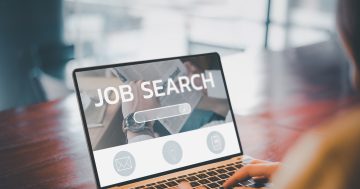Rachel Eva Lim* says machine-learning models offer insights into how putting women in leadership positions affects gender stereotypes in the workplace.
 Although we have a long way to go to achieving gender parity in the workplace, the past few years have shown some encouraging signs of progress.
Although we have a long way to go to achieving gender parity in the workplace, the past few years have shown some encouraging signs of progress.
According to the World Economic Forum, women’s share of senior and leadership roles globally has steadily increased between 2017 and 2022.
However, the reality is that women continue to be underrepresented in leadership positions, and less than 9 per cent of Fortune 500 CEOs are women.
This is driven at least partly by gender stereotypes that associate men, but not women, with leadership-focused, agentic traits – such as being determined, decisive and assertive – which creates the expectation that men will be more likely to succeed as leaders.
Given that these stereotypes are expressed in language, can we learn something about organisations’ attitudes towards women from how they speak?
In a recent Tech Talk X webinar organised by digital@INSEAD, INSEAD Assistant Professor of Decision Sciences Asher Lawson unpacked how machine learning offers insights into the association between gender and leadership qualities and how it varies across firms.
He showed that appointing women to the top tiers of management can help mitigate deep-rooted stereotypes in a way that is enduring and can precipitate the future hiring of women leaders
Harnessing machine learning
“Gender stereotypes have severe consequences for women, such as the devaluation of their performance at work, denial of credit for their success and their broader exclusion in the workplace,” Lawson said.
“Not being associated with [positive and agentic] leadership traits affects how much women are able to succeed and thrive in such roles.”
How can we leverage machine learning to address this? Lawson highlighted that firms produce copious amounts of publicly available text data that can be examined to get a better understanding of how these companies approach and talk about gender stereotypes.
Machine-learning models can be used to analyse this text – in particular, sophisticated word-vector models that measure the similarities in meaning between different concepts.
A company-specific word-vector model is trained on the text data obtained from that organisation.
Target words are then represented in a high-dimensional vector space that maps out the relationships between them.
Through this, the model can reveal how different words are associated with each other (for instance, when and how “she” or “her” is used alongside agentic words) and how these concepts are related within the context of language used by that organisation.
This gives us a better understanding of the gender stereotypes and attitudes espoused by a firm.
Word-vector models in action
Lawson then described a study about gender stereotypes he conducted with Ashley Martin from Stanford Graduate School of Business, Imrul Huda from University of Chicago and Sandra Matz from Colombia Business School.
They obtained data from S&P 500 companies between 2009 and 2018, consisting of around 43,000 documents and over 1 billion words of text garnered from SEC filings, annual reports, proxy shareholder meeting statements and transcripts of investor calls.
For each of these firms, the researchers used the aforementioned word-vector model process to obtain a measure of how closely women were associated with agentic leadership traits, and the shifts in gender stereotypes that arose when women were elevated to key leadership positions within the organisations.
Among the organisations they examined were beauty companies Ulta Beauty and L Brands.
The firms initially showed similar results in terms of how closely women were associated with agentic leadership traits.
But that all changed in July 2013 when Ulta Beauty appointed Mary Dillon as their CEO.
“What we observe in the period post-hire is that the association between women and leadership traits increased massively for Ulta Beauty, but not so much for L Brands,” Lawson said.
This trend remained robust across the researchers’ wider data set.
Over 70 per cent of the firms they studied that hired women as CEOs saw an increase in the association between women and leadership traits, but this only applied to less than 30 per cent of the organisations that did not hire women as CEOs.
Unlike what one might think, a closer association between women and positive leadership traits did not come at the expense of women being viewed as likeable as far as how they were described by their own companies.
“There doesn’t seem to be a penalty for women ascending to these leadership positions in terms of how they are perceived,” Lawson said, while noting that the study did not encompass how women leaders are represented in the media, which is a different story altogether.
The research by Lawson and his colleagues also showed that increasing the proportion of women on a company’s board of directors can result in the use of more progressive language surrounding women and lead to changes in gender stereotypes that precipitate the appointment of more women to the board.
Implications for organisations
Lawson then ran through some important takeaways for firms, including how bringing more women on board can lead to a virtuous cycle by predicting the hiring of even more women in the future.
“This is in many ways the most exciting result. If we can increase female representation in leadership roles, this can change the gender stereotypes expressed in language that lead to the devaluation of women’s performance and impede their careers,” Lawson said.
“You see how such a thing can snowball into fighting back against this massive imbalance we see in female representation.”
There are also implications for firms regarding the data they produce – which, as shown through the study, can be analysed using machine learning to reveal key information about the gender attitudes within these companies.
This means that potential investors, partners or employees could be able to detect if an organisation has gender attitudes that are unconducive to women’s success, which could quickly become a competitive disadvantage.
“[With this increased] transparency and accountability, companies [will be compelled to] look internally and try harder to change those attitudes and stamp out pernicious gender stereotypes,” Lawson said.
“The other possibility is that firms might need to strive to control the latent attitudes they are communicating in this text data.”
Responding to a question, Lawson suggested that word-vector models could also be used by firms for their internal DEI efforts.
For instance, by gathering and analysing anonymous email corpus data, they could evaluate the language used to describe women and other minorities within their company.
While the model cannot make the changes on its own, it can provide fine-grained information to target specific issues an organisation might have and that can be used to inform training sessions or interventions and monitor their effects.
*Rachel Eva Lim is a Senior Editor at INSEAD Knowledge.
This article first appeared at knowledge.insead.edu











